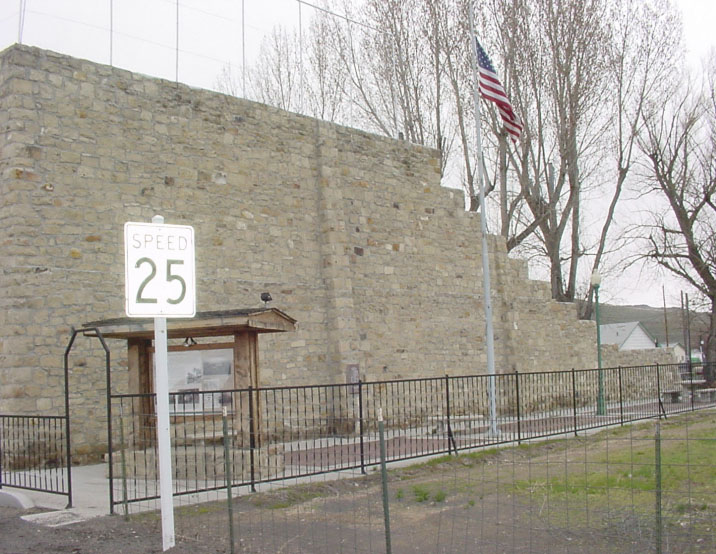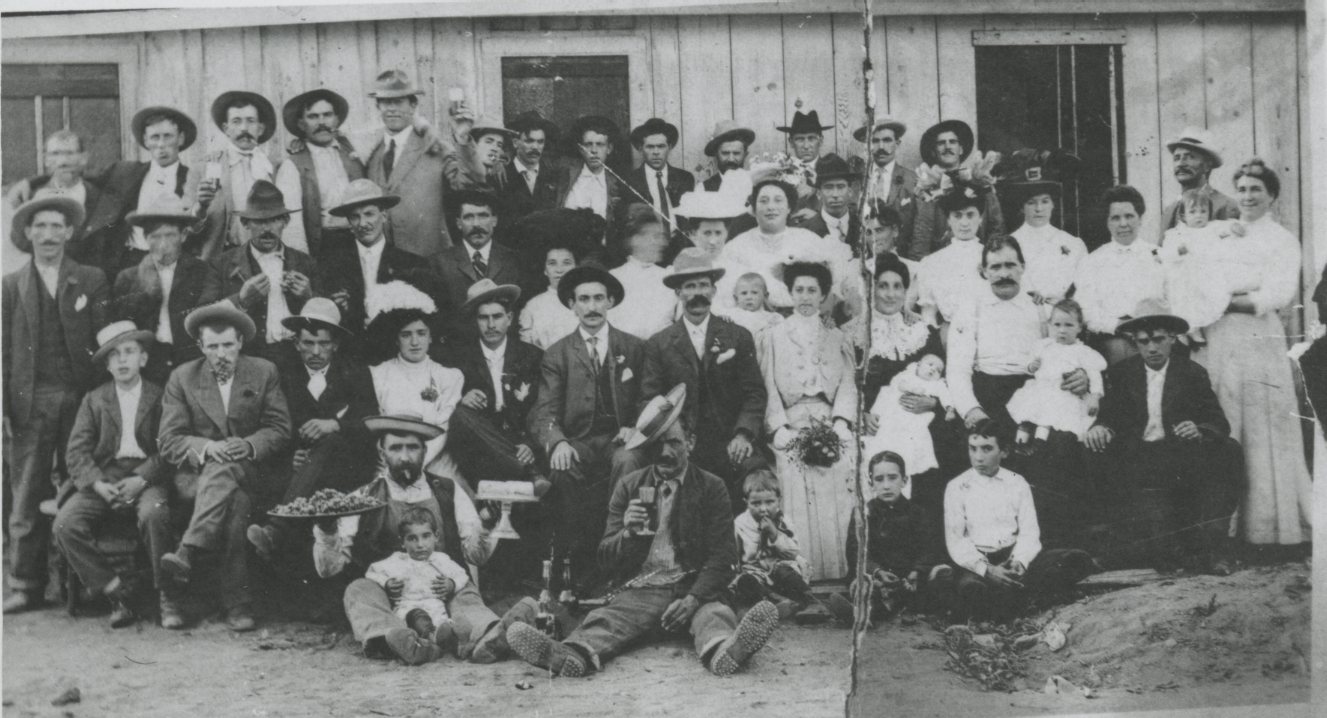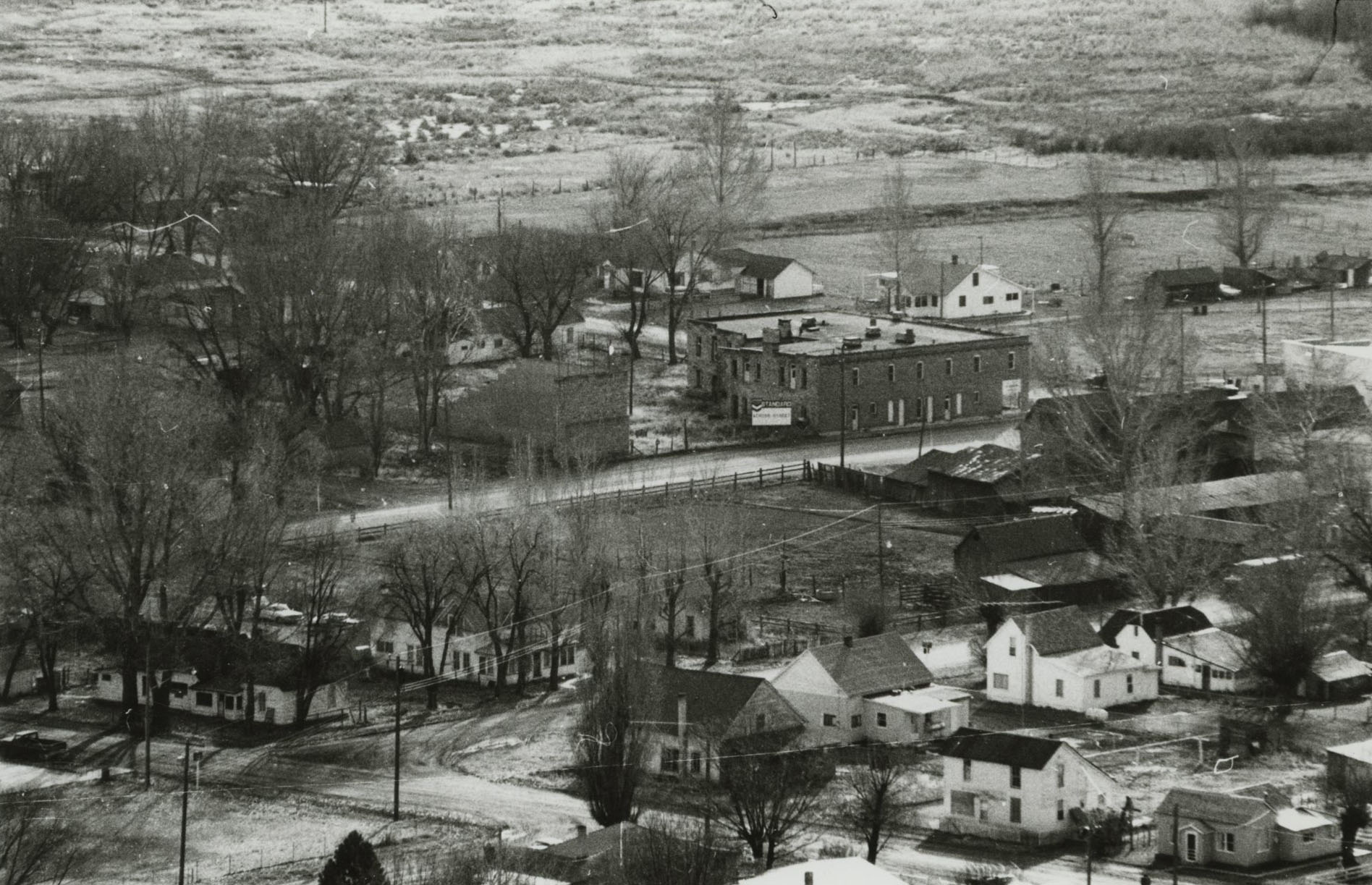The pelota fronton in Jordan Valley is a handball court built by Basque sheepherders in 1915. This landmark, at the heart of the city on Highway 95 and Bassett Street, is a symbol of the cultural traditions of Basque immigrants during a period when sheepherding dominated the local economy. Popular in the provinces of southern France and northern Spain, the game of pelota spread throughout the New World with Basque immigrants.
Basques immigrated to the West beginning in the late 1840s, but most of those who traveled to eastern Oregon arrived between 1900 and 1920 and worked as sheepherders on open rangeland. They arrived in Jordan Valley between 1902 and 1916. When not working on the open range, most herders went into town, usually staying in one of three boardinghouses operated by Basques. Herders and Basques in Jordan Valley built the fronton, carrying stones from a quarry east of Jordan Valley and hewing them by hand to make the two uneven walls of the court.
While the exterior masonry is rough-hewn stone, the interior is stuccoed with earthen mortar. The short wall is almost square, 33 feet wide and about thirty feet high to the top of the rock work. The long wall reaches 93 feet, and the height is stepped down toward the back of the court. The size corresponds to a trinquet size court in northern Basque provinces and parts of Spain. The walls were topped with a ten-foot-high screen. On the inside, a strip (originally tin) three feet above the cement floor extends across the short wall. Vertical lines mark distances along the long wall, one of which is a pass line. The eighteen-inch thick walls are buttressed on the outside.
Players used a ball made from a rubber core wrapped with twine and covered with wet goatskin. Once the cover dried, the balls were hard. The players used their hands or a wooden pala, or paddle, made of maple, about eighteen inches long, six inches wide, and one and one-half inches thick at the hitting point. The wicker racket, or cesta, common elsewhere, was not used in Jordan Valley games.
Blaid was the version of pelota played in Jordan Valley. Usually the game was played by two players, but sometimes two teams of two or three players each competed against each other. Players stood behind the pass line and hit a ball against the front wall directly or by bouncing it off the sidewall on their left side. If a ball landed below the tin strip or beyond ninety feet or if a player failed to return a point, then the opposite side gained a point and the serve. Games were played to thirty points, or any number agreed upon.
Fewer herders immigrated to the United States after quotas were imposed from 1921 to 1924. Grazing on open rangeland dramatically declined when the Taylor Grazing Act of 1934 caused rangelands to be withdrawn from grazing and imposed fees for permits on the remaining lands. In 1935, Basques in the Jordan Valley were granted permits for only about 8 percent of the applications they filed. The limitation on permits meant that fewer herders were needed, and quotas restricted the number of Basque immigrants to Jordan Valley. With fewer herders in the area, the fronton fell into disuse.
The pelota fronton was listed on the National Register of Historic Places in 1972, and restoration efforts began in the 1990s. Restoration included installation of a covered interpretive sign and a stone representation of the Zazpiak Bat, the coat of arms for the seven Basque provinces. A flagpole, streetlight, and bench were placed along a wall, and the court was enclosed on two sides by a metal fence. A sign reads: “Jordan Valley Ko Frontoia restored 1997 danok etorri” in recognition of the inauguration of the restored pelota fronton in September 1997. The upkeep of the court is managed by the Jordan Valley Basque Club and the City of Jordan Valley.
-
![Basque pelota fronton, c. 1920]()
Basque pelota fronton, c. 1920.
Basque pelota fronton, c. 1920 Courtesy Oreg. Hist. Soc. Research Lib., OrHi10702
-
![Pelota Fronton]()
Pelota Fronton.
Pelota Fronton Courtesy Oregon Department of Transportation
-
![Pelota Fronton]()
Pelota Fronton.
Pelota Fronton Courtesy Oregon Department of Transportation
Related Entries
-
![Basque boardinghouses in Oregon]()
Basque boardinghouses in Oregon
Oregon’s earliest Basque settlers arrived in the late 1880s from northe…
-
![Basques]()
Basques
The first Basques to Oregon arrived in the late 1880s. These Euskalduna…
-
![Jordan Valley]()
Jordan Valley
The town of Jordan Valley stretches along Highway 95 in Oregon’s High D…
Related Historical Records
Map This on the Oregon History WayFinder
The Oregon History Wayfinder is an interactive map that identifies significant places, people, and events in Oregon history.
Further Reading
Baker, Sarah. "Basque-American Folklore in Eastern Oregon." M.A. Thesis in Folklore, University of California, Berkeley, 1972.
Douglass, William A. and Jon Bilbao. Amerikanuak: Basques in the New World. Reno: University of Nevada Press, 1975.
Walton, Elisabeth. "Jordan Valley Pelota Fronton." Nomination to the National Register of Historic Places, 1972.






